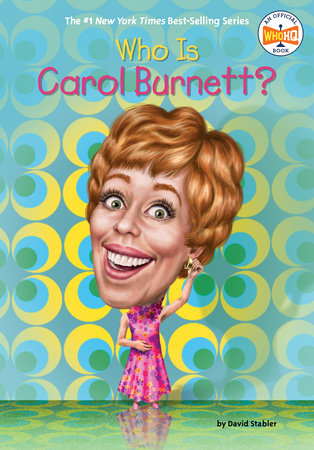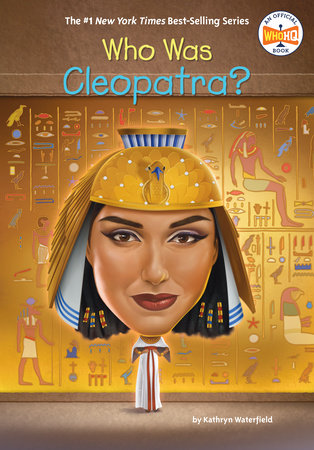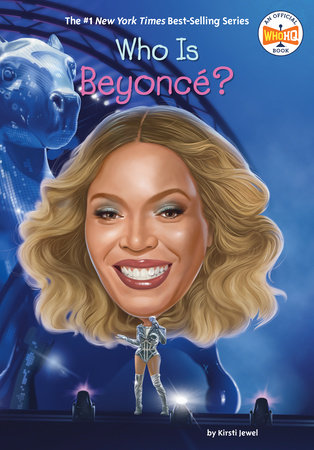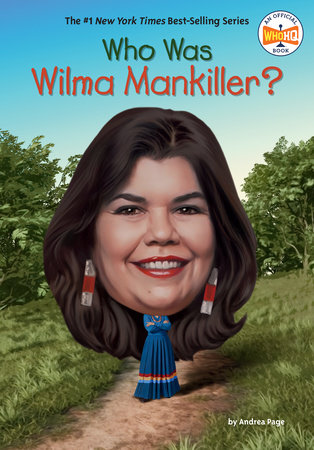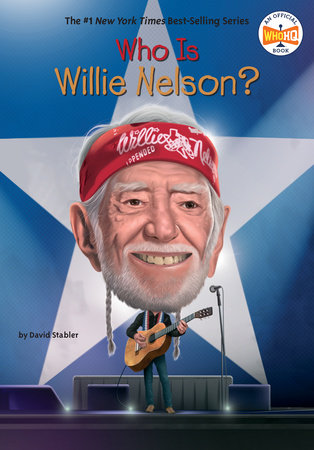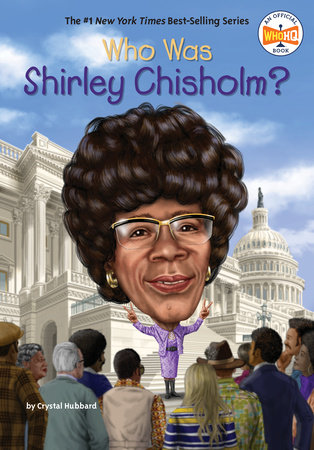Excerpt
Who Is Carol Burnett?
Who Is Carol Burnett? On September 11, 1967, just before 10:00 p.m., thirty-four-year-old Carol Burnett gathered around the television set with her family in their Los Angeles living room. Together with her husband, Joe, she settled in to watch her brand--new TV series,
The Carol Burnett Show.
There were potato chips and popcorn on the coffee table, but Carol was too nervous to eat. Though she had been an actress and comedian for more than ten years, Carol had never had her own TV show before. She was terrified that no one would like it.
On the screen, Carol walked out onto a stage wearing a yellow polka-dot dress. Her bright red hair was cut short. She introduced herself and answered questions from the audience. After the musical theme played, a series of comedy skits and songs began. Though Carol had taped her first show some weeks earlier, this was her first time watching it. She spent the entire hour peeking through her fingers at the TV.
When it was over, the “good night” music played. All the members of the cast gathered onstage to sign their names in Carol’s scrapbook. Guest star Jim Nabors signed first, followed by funnyman Harvey Korman. Actress and comedian Vicki Lawrence added her signature, and then tall, handsome Lyle Waggoner.
The credits rolled. Watching at home, Carol breathed a sigh of relief. She had done it. The live audience had laughed all the way through. Most importantly, her family loved it. Now she just had to hope that TV viewers across the country would like it, too.
Over the next week, Carol began to sense that her new show was a hit. Fan letters started arriving at the studio: one hundred, then two hundred. Vicki, Harvey, and Lyle received fan mail, too. By the middle of November, forty stations in the United States were showing
The Carol Burnett Show on Monday nights. As the first woman to host her own TV variety show, Carol had made history.
How did a shy red-haired girl from Texas grow up to be one of America’s most popular television stars? It wasn’t easy. Raised by her grandmother, Carol forged her own path from San Antonio to Hollywood to Broadway and beyond. And she did it all while overcoming obstacles that would have stopped most people in their tracks. Her inspiring success story proves that happy endings really do happen.
Chapter 1 Hollywood Kid Carol Creighton Burnett was born on April 26, 1933, in San Antonio, Texas. Her father, Joseph, managed a movie theater there. Her mother, Ina, was an avid movie fan. She named Carol after one of her favorite film stars, actress Carole Lombard.
Carol grew up in the early days of the economic crisis known as the Great Depression. Though her father had a steady job, he often struggled to provide for the family. He turned to alcohol to deal with the stress of putting food on the table. Carol’s mother also started drinking. In time, they both became addicted to alcohol. When they drank, they argued a lot.
When Carol was seven years old, her parents moved to California in search of a better life. But their arguments continued. Eventually, they separated, leaving Carol in the care of her mother’s mother, Mabel “Mae” Eudora White, whom she called Nanny. Carol and Nanny lived in a small, cramped boarding house in Hollywood, the home of the movie industry. (A boarding house is a home where guests rent rooms and have their meals together.) Nanny worked nights as a cleaning woman at a movie studio to pay the bills. Carol’s mother lived close by and visited them often. Carol’s father lived with his own mother in nearby Santa Monica.
As a child, Carol developed the same love of movies that her mother had. Her favorite movie was
Pinocchio. Her favorite stars included Barbara Stanwyck, Joan Crawford, and her namesake, Carole Lombard. To pay for tickets, Carol collected glass milk and soda bottles and turned them in for the deposit money. She went to the movies at least five times a week! Sometimes she even sneaked a roll or two of toilet paper from the theater bathroom to bring home to her family.
When Carol was nine, she started to do a “Tarzan yell” in imitation of the big--screen jungle hero played by Johnny Weissmuller. Johnny starred in twelve
Tarzan movies between 1932 and 1948.
When she was in second grade, Carol invented an imaginary twin sister whom she called Karen. Karen had dimpled cheeks like the popular child actress Shirley Temple. When she was feeling especially mischievous, Carol dressed up as “Karen” and tried to fool her neighbors in the boarding house. When Carol was tired, Karen mysteriously vanished. In 1944, when Carol was eleven, her mother gave birth to a baby girl, Chrissie. Now Carol had a real--life half sister who came to live in the boarding house with her and Nanny.
The Golden Age of Hollywood “The golden age of Hollywood” is a term used to describe a period in the history of American movies from the late 1920s to the early 1960s. During these years, five film studios—MGM, Paramount, Fox, Warner Bros., and RKO—made almost all the movies released in the United States.
The two decades of the 1930s and ’40s, in particular, produced some of the most popular movie stars of all time, including Clark Gable and Carole Lombard, Humphrey Bogart and Lauren Bacall, and Spencer Tracy and Katharine Hepburn. Some of the classic films made during this period include Gone with the Wind, King Kong, The Wizard of Oz, and Citizen Kane. Besides going to movies, Carol had a lot of other creative hobbies. She loved to read. One of her favorite books was
The Yearling, the story of a young boy who takes care of an orphaned fawn. In 1946, it was made into a movie, which Carol wanted to be first in line to see. Grimms’ fairy tales also captured Carol’s attention. She drew pencil sketches of fairy-tale scenes, bringing the stories to life. Sometimes Nanny would take Carol’s drawings to her job at the movie studio. She’d leave the sketches behind in hopes that someone in the art department would “discover” Carol’s art. But the employees there only left a note asking her not to use their art supplies!
Carol’s other talent was music. Nanny was a trained musician who taught her to play the piano—although they couldn’t afford one of their own. Carol’s mother played the ukulele. Sometimes the three would gather round the kitchen table and sing in harmony together.
For a time, Carol thought she might want to be a cartoonist when she grew up. She even created her own comic strip, called “The Josephson Family,” about a family whose names all began with the letter
J. Carol’s favorite newspaper comic strip was
Brenda Starr, Reporter, about a red-haired newspaper reporter. Reading about Brenda’s adventures inspired Carol to work on her junior high school newspaper.
One day, the paper assigned Carol to write about the school play. The tryouts were being held in the school auditorium. On a whim, Carol decided to try out for the play herself. She wanted to play the part of a gum-chewing, wisecracking maid. But when Carol got up onstage to read her lines for the drama teacher, something strange happened. She looked out over the sea of faces staring up at her and . . .froze! Was this what stage fright felt like?
Carol stumbled through her reading, sure that she was not going to get the part. But the drama teacher must have seen something in her. The next day, Carol was surprised to learn that she was one of two finalists for the role. The drama teacher eventually decided to give the part to them both—Carol and a boy named Gordon. They would each play the role every other night. It wasn’t the ideal solution, but it gave Carol her first taste of acting—and she liked it. The show-business bug had bitten her. Now she wanted to take it to the next level.
Chapter 2 Taking the Stage When she completed junior high, Carol moved on to what she once called “the most famous high school in the whole wide world.” Hollywood High was where movie stars sent their kids to prepare for college.
Even though she didn’t have famous parents, Carol hoped to continue acting at her new school. Unfortunately, the teacher who ran the theater department retired just as Carol was starting tenth grade. For the next three years, there would be no school productions at Hollywood High. Carol ended up studying Spanish and art instead.
With no plays to appear in, Carol continued working for the school newspaper. She wrote her own column mixing humor and poetry. She was a straight-A student and began making plans to study journalism at the University of California at Los Angeles (UCLA). There was just one problem: She couldn’t afford it.
In 1951, UCLA charged forty-two dollars a year to attend. But the rent on Nanny’s apartment was thirty-five dollars a month. There was not enough left over to pay Carol’s tuition. Carol hoped that she would find the money somehow, but as the day to register for classes arrived, she still didn’t have a plan. Then a stroke of good luck came her way.
One morning, Carol went out to check the mail. Inside the mailbox, she found an envelope with her name on it. When she opened it, a fifty-dollar bill came fluttering out. It was enough to cover tuition at UCLA for an entire year. But who had sent it?
Astonished, Carol checked the envelope for a return address. But there wasn’t one. Whoever had sent this had delivered it by hand and left no note inside. Just one crisp bill with President Ulysses S. Grant’s face on it. Carol pocketed the money and started making plans to register at UCLA that afternoon.
When she arrived on campus, another surprise awaited her: UCLA did not have a journalism department! So Carol would have to decide on a different subject to major in. She chose theater. In her heart, she believed acting was her true passion.
In the summer of 1951, Carol took a job as an usher at the Warner theater, a fancy “movie palace” on Hollywood Boulevard. Carol’s job was to escort moviegoers to their seats. Carol loved the job because she could watch movies for free. But she didn’t last long because she loved movies a little
too much.
One night, the movie
Strangers on a Train was showing at the theater. Carol had seen it many times. When a couple arrived late for the start of the film, Carol instructed them to wait until the next showing. The movie was so good, she told them, it should be seen from beginning to end. But the theater manager overheard her and fired her on the spot. He felt she should have simply shown them to their seats, rather than ask them to wait. Carol was humiliated. She never forgot what it felt like to be fired.
Movie Palaces Between 1910 and 1940, movie fans could watch their favorite films in style at one of America’s many so-called “movie palaces.” These grand theaters featured plush seats, huge chandeliers, air--conditioning, and velvet curtains that made them look and feel like royal palaces. They were built as luxurious spaces that would attract movie audiences. One of the most famous movie palaces was the Warner Bros. Hollywood Theatre, which opened in 1928. It seated 2,700 people and had a ceiling painted to look like the sky.
Movie palaces remained the best way to watch a movie until the 1950s, when they went out of fashion with the rise of television and modern “multiplex” movie theaters. Toward the end of her time in college, Carol started dating Don Saroyan, one of her fellow theater students. They dreamed of moving to New York City together after graduation to find work as actors on Broadway. But Carol didn’t have the money to pay her way across the country.
And getting fired from her job at the movie theater hadn’t helped.
One Saturday night in 1954, Carol and Don were performing together at a fancy Hollywood party. After acting out a scene from the Broadway musical
Annie Get Your Gun, they were
approached by one of the wealthy party guests. He told them how much he enjoyed their performance and asked what they planned to do after graduation. They told the man about their dream of moving to New York. He offered to help them. He told them to drop by his office on Monday morning. When Carol and Don arrived, the man had his accountant write two one-thousand-dollar checks—one for each of them. He instructed them to pay back the loan in five years, but he made them swear they would never reveal his identity. They agreed. And they never did.
Armed with enough cash to pay her way, Carol started packing for her new life in New York City—and a date with the bright lights of Broadway.


